Xiaoyang Xu
Fast and Certifiable Trajectory Optimization
Jun 11, 2024

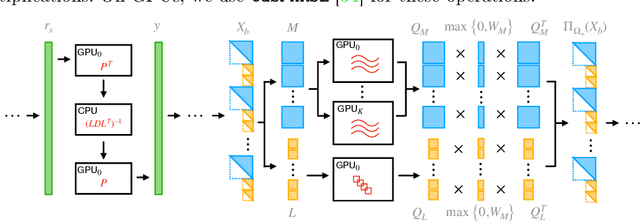

Abstract:We propose semidefinite trajectory optimization (STROM), a framework that computes fast and certifiably optimal solutions for nonconvex trajectory optimization problems defined by polynomial objectives and constraints. STROM employs sparse second-order Lasserre's hierarchy to generate semidefinite program (SDP) relaxations of trajectory optimization. Different from existing tools (e.g., YALMIP and SOSTOOLS in Matlab), STROM generates chain-like multiple-block SDPs with only positive semidefinite (PSD) variables. Moreover, STROM does so two orders of magnitude faster. Underpinning STROM is cuADMM, the first ADMM-based SDP solver implemented in CUDA and runs in GPUs. cuADMM builds upon the symmetric Gauss-Seidel ADMM algorithm and leverages GPU parallelization to speedup solving sparse linear systems and projecting onto PSD cones. In five trajectory optimization problems (inverted pendulum, cart-pole, vehicle landing, flying robot, and car back-in), cuADMM computes optimal trajectories (with certified suboptimality below 1%) in minutes (when other solvers take hours or run out of memory) and seconds (when others take minutes). Further, when warmstarted by data-driven initialization in the inverted pendulum problem, cuADMM delivers real-time performance: providing certifiably optimal trajectories in 0.66 seconds despite the SDP has 49,500 variables and 47,351 constraints.
A Novel Skip Orthogonal List for Dynamic Optimal Transport Problem
Oct 27, 2023
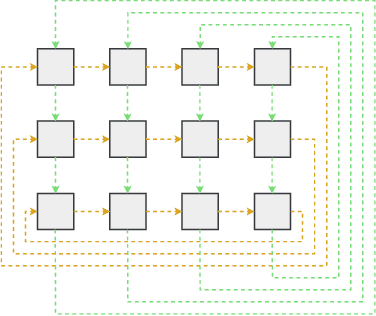
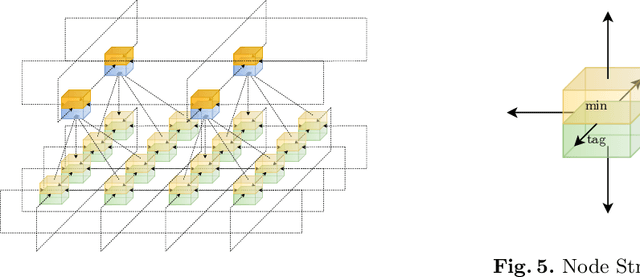

Abstract:Optimal transportation is a fundamental topic that has attracted a great amount of attention from machine learning community in the past decades. In this paper, we consider an interesting discrete dynamic optimal transport problem: can we efficiently update the optimal transport plan when the weights or the locations of the data points change? This problem is naturally motivated by several applications in machine learning. For example, we often need to compute the optimal transportation cost between two different data sets; if some change happens to a few data points, should we re-compute the high complexity cost function or update the cost by some efficient dynamic data structure? We are aware that several dynamic maximum flow algorithms have been proposed before, however, the research on dynamic minimum cost flow problem is still quite limited, to the best of our knowledge. We propose a novel 2D Skip Orthogonal List together with some dynamic tree techniques. Although our algorithm is based on the conventional simplex method, it can efficiently complete each pivoting operation within $O(|V|)$ time with high probability where $V$ is the set of all supply and demand nodes. Since dynamic modifications typically do not introduce significant changes, our algorithm requires only a few simplex iterations in practice. So our algorithm is more efficient than re-computing the optimal transportation cost that needs at least one traversal over all the $O(|E|) = O(|V|^2)$ variables in general cases. Our experiments demonstrate that our algorithm significantly outperforms existing algorithms in the dynamic scenarios.
Deep Ordinal Regression Forests
Aug 07, 2020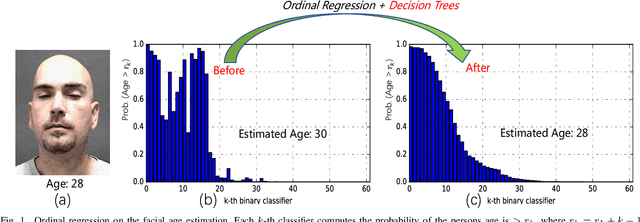
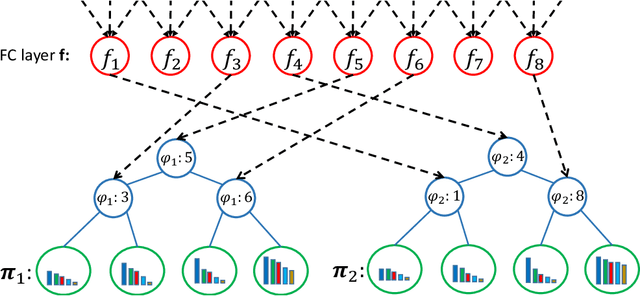


Abstract:Ordinal regression is a type of regression techniques used for predicting an ordinal variable. Recent methods formulate an ordinal regression problem as a series of binary classification problems. Such methods cannot ensure the global ordinal relationship is preserved since the relationships among different binary classifiers are neglected. We propose a novel ordinal regression approach called Deep Ordinal Regression Forests (DORFs), which is constructed with the differentiable decision trees for obtaining precise and stable global ordinal relationships. The advantages of the proposed DORFs are twofold. First, instead of learning a series of binary classifiers independently, the proposed method learns an ordinal distribution for ordinal regression. Second, the differentiable decision trees can be trained together with the ordinal distribution in an end-to-end manner. The effectiveness of the proposed DORFs is verified on two ordinal regression tasks, i.e., facial age estimation and image aesthetic assessment, showing significant improvements and better stability over the state-of-the-art ordinal regression methods.
STAS: Adaptive Selecting Spatio-Temporal Deep Features for Improving Bias Correction on Precipitation
Apr 13, 2020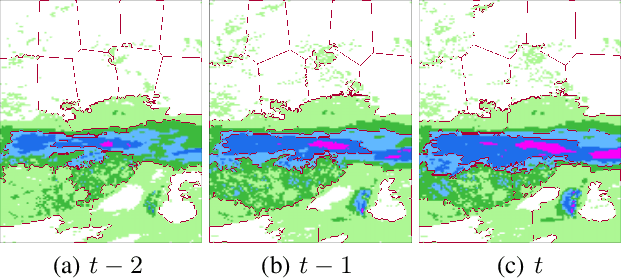
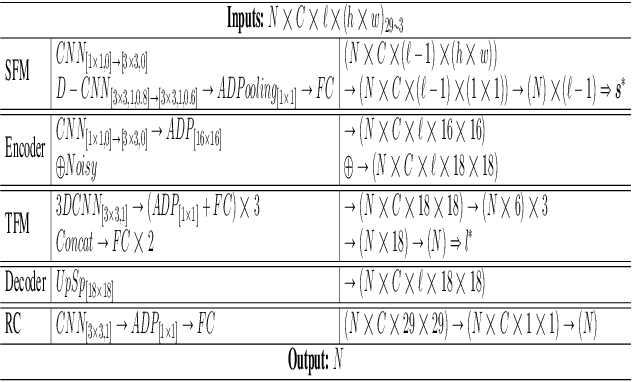
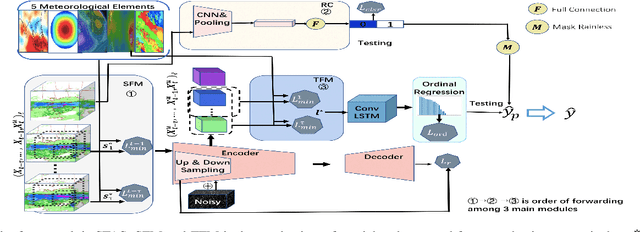
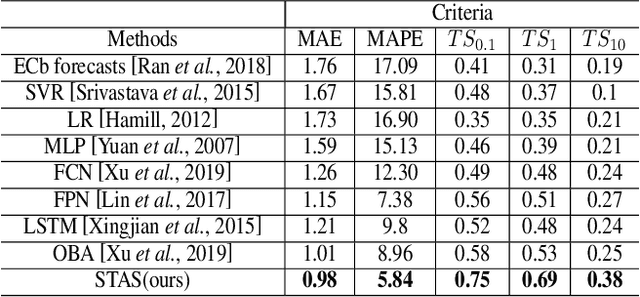
Abstract:Numerical Weather Prediction (NWP) can reduce human suffering by predicting disastrous precipitation in time. A commonly-used NWP in the world is the European Centre for medium-range weather forecasts (EC). However, it is necessary to correct EC forecast through Bias Correcting on Precipitation (BCoP) since we still have not fully understood the mechanism of precipitation, making EC often have some biases. The existing BCoPs suffers from limited prior data and the fixed Spatio-Temporal (ST) scale. We thus propose an end-to-end deep-learning BCoP model named Spatio-Temporal feature Auto-Selective (STAS) model to select optimal ST regularity from EC via the ST Feature-selective Mechanisms (SFM/TFM). Given different input features, these two mechanisms can automatically adjust the spatial and temporal scales for correcting. Experiments on an EC public dataset indicate that compared with 8 published BCoP methods, STAS shows state-of-the-art performance on several criteria of BCoP, named threat scores (TS). Further, ablation studies justify that the SFM/TFM indeed work well in boosting the performance of BCoP, especially on the heavy precipitation.
Towards a Precipitation Bias Corrector against Noise and Maldistribution
Oct 15, 2019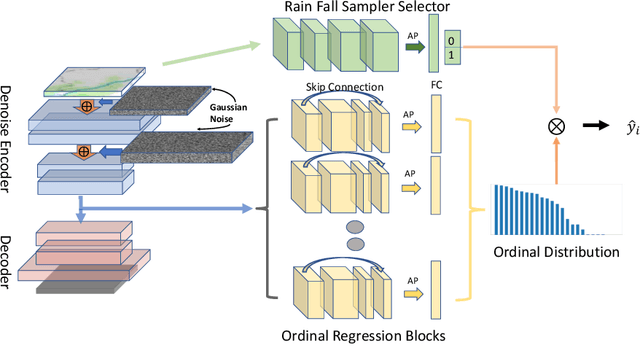
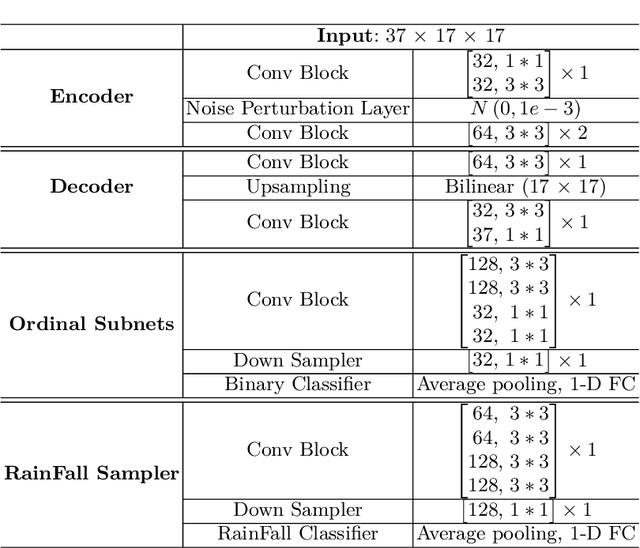
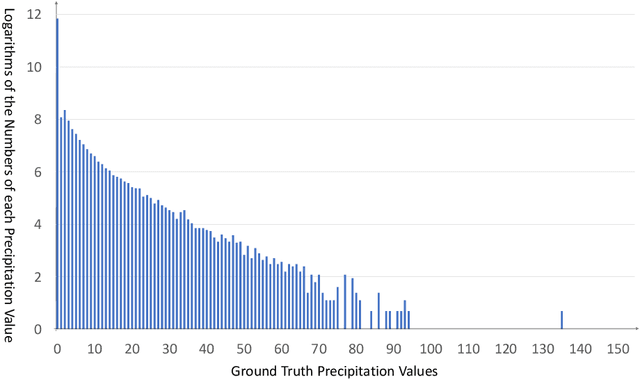

Abstract:With broad applications in various public services like aviation management and urban disaster warning, numerical precipitation prediction plays a crucial role in weather forecast. However, constrained by the limitation of observation and conventional meteorological models, the numerical precipitation predictions are often highly biased. To correct this bias, classical correction methods heavily depend on profound experts who have knowledge in aerodynamics, thermodynamics and meteorology. As precipitation can be influenced by countless factors, however, the performances of these expert-driven methods can drop drastically when some un-modeled factors change. To address this issue, this paper presents a data-driven deep learning model which mainly includes two blocks, i.e. a Denoising Autoencoder Block and an Ordinal Regression Block. To the best of our knowledge, it is the first expert-free models for bias correction. The proposed model can effectively correct the numerical precipitation prediction based on 37 basic meteorological data from European Centre for Medium-Range Weather Forecasts (ECMWF). Experiments indicate that compared with several classical machine learning algorithms and deep learning models, our method achieves the best correcting performance and meteorological index, namely the threat scores (TS), obtaining satisfactory visualization effect.
 Add to Chrome
Add to Chrome Add to Firefox
Add to Firefox Add to Edge
Add to Edge